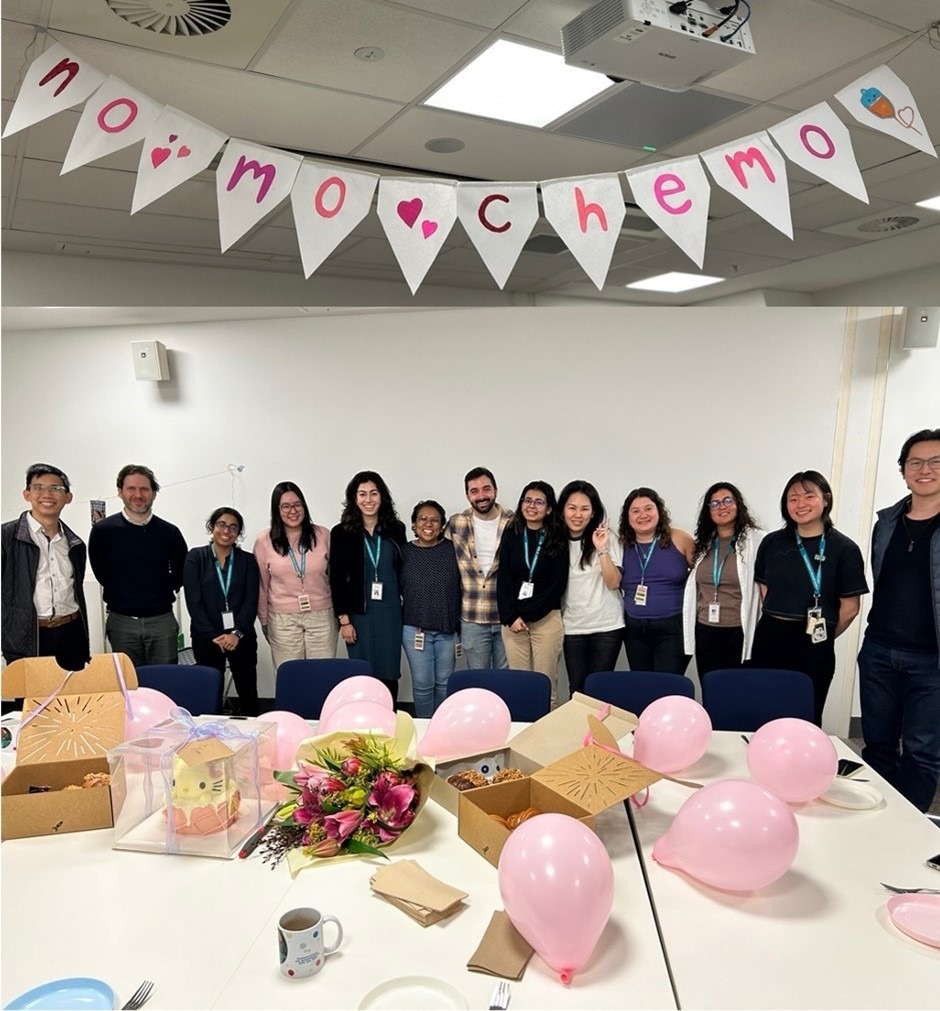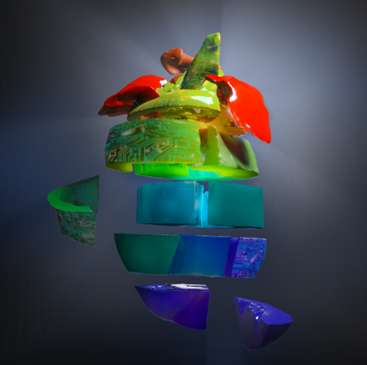When I first received the diagnosis of bilateral breast cancer in June 2023, my first reaction was “oh this is sooooooo interesting, it would be perfect to do spatial transcriptomics on these samples and visualise with VR-Omics”. It was only when I saw the shocked face of my family, friends and colleagues that I realised that “interesting” is probably not the right word here and that I began to realise how heavy this journey will be.

Mirana and her team celebrate the end of Mirana’s chemotherapy
Image Credit: MGI
For context, like most scientists, I am a massive nerd and I am obsessed with my research. I am a computational biologist and, in my laboratory, we are developing next-generation software to answer a simple question: how do 25,000 genes build an entire body? Since starting my PhD in 2003, I was fascinated with gene patterns, Genes are made up of DNA, the instructions for development. In particular, I am interested in how the activity of these genes is orchestrated so they are present and active at the right place in the embryo and at the right time during development, so the baby can develop successfully. Back then we used robotics whole-mount staining to be able to screen for these patterns, but we could only look at only a handful of genes at a time so we couldn’t put that research forward to understand our full genome, that is, all our genes at once. I had to wait 20 years for the technology “spatial transcriptomics” to be able to finally interrogate genomic information on a spatial level. And I just could not contain my excitement.
So, what is spatial transcriptomics, you ask.
This is a new technology that allows us to see detailed maps of which genes are active in a tissue sample. You take a thin slice of a tissue sample, run it through the machine, and the output is a complex map of the gene expression.
This technology can be used to study any disease in any tissue type. In my journey with breast cancer, as a researcher, I might compare a sample of my tumour with healthy breast tissue. I could see which genes are activated in the tumour that are not activated in the healthy tissue. Moreover, if someone else donated a sample of their breast cancer tissue, other genes might be turned on in their tumour that are different to mine.
This is because every cancer is different. By seeing exactly which genes are turned on, or expressed, and exactly where they are located in the sample, this can tell us about the cause of the cancer.
However, spatial transcriptomics results in an enormous amount of data, and these maps can be incredibly difficult to interpret. My team and I have developed VR-Omics, a cutting-edge software designed to simplify spatial transcriptomics analysis.
VR-Omics empowers all researchers to explore spatial gene expression patterns in a user-friendly virtual reality environment or via a desktop application.
This capability can expedite discoveries by allowing users to identify clusters, correlations, and potential markers without needing extensive computational skills.

Still from 3D-Cardiomics, software created by Mirana and her team that allows you to view the adult heart transcriptome in 3D.
Image Credit: Monika Mohenska
My motivation to share my story for Breast Cancer Awareness Month is threefold:
- to bring awareness to breast cancer: please don’t delay your screening if you are due, it could save your life!
- to support fundamental research that forms the foundation for groundbreaking discoveries that advance medical research: we can’t fix what we don’t understand. It’s also important that genomics research is accessible for all.
I would also like to bring attention to my colleagues such as A/Professor David Elliott, who is looking for drugs that will protect the heart from the toxicity of chemotherapy drugs. I know one day this will have a massive impact on children and adults, like myself, who undergo chemotherapy to treat their cancer but may have other health complications following chemo.
- Last but not least, to have a platform to give a massive shout out to the heroes of this story who are my family (in Australia and in France), friends, my team for their infinite support and so much understanding, as well as my colleagues and mentors at Murdoch Children's Research Institute and beyond in the bioinformatics and developmental biology community. I would like to also thank my cancer support groups (“women who care”, “our eyebrows will grow”), my surgeons, oncologists, clinical psychologist, I feel privileged to have been surrounded by such unmeasurable care and support. Going through cancer is not glamourous, it does take a village. And a special shout out to my husband who has been pretty much solo-daddy-ing for the past 1.5 years. The man needs a holiday.
Disclaimer: A/Professor Mirana Ramialison is the Head of the Transcriptomics and Bioinformatics group at Murdoch Children's Research Institute. Mirana’s laboratory is funded by grants from the Novo Nordisk Foundation Center for Stem Cell Medicine, reNEW, the Australian Research Council, the National Health and Medical Research Council, the Human Frontiers Science Program, Heart Foundation and MGI STOmics Grant.
Useful links:
VR-Omics software: https://ramialison-lab.github.io/pages/vromics.html
Example of spatial data generated in the lab, accessible for all: “"Google map” of heart genes: https://3d-cardiomics.erc.monash.edu.au/
To learn more, read a review on spatial transcriptomics: https://www.nature.com/articles/s42003-020-01341-1
Author: Mirana Ramialison
Group Leader, Transcriptomics & Bioinformatics, Stem Cell Medicine
Co-Lead Bioinformatics Hub, Novo Nordisk Foundation Center for Stem Cell Medicine, reNEW Melbourne
Treasurer, Australian Bioinformatics And Computational Biology Society (ABACBS)
Murdoch Children’s Research Institute